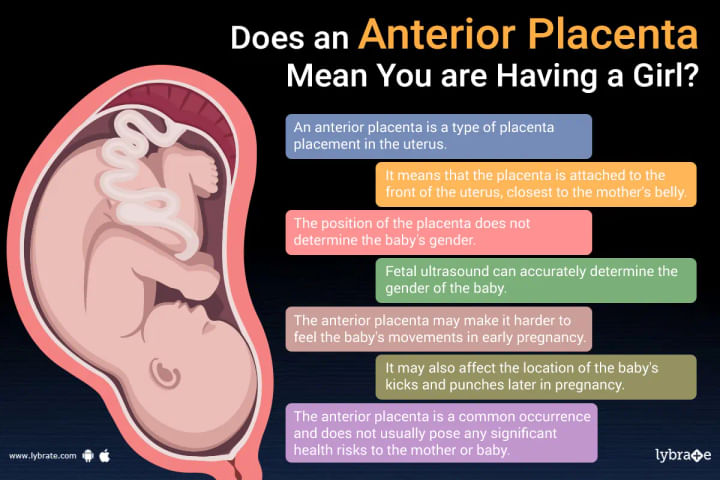Does an Anterior Placenta Mean You re Having a Girl?
What Does the Term “Anterior Placenta” Mean?
There are two types of cells that make up an embryo: those that develop into the baby and those that develop into the placenta. The placenta can be best defined as a pancake-shaped organ that develops in a woman's uterus when she is pregnant. It serves as a barrier between the mother and the developing fetus, providing nutrients and oxygen to the fetus and removing waste products from its blood.
It must be noted that the placenta only develops when a woman is expecting a baby, and it attaches to the wall of the uterus. The position of the placenta can be anywhere—front, back, right, or left.
If the placenta attaches to the back of the uterus, it is commonly known as a posterior placenta. If it attaches to the front of the uterus, it is referred to as an anterior placenta. In other words, if your practitioner or healthcare provider tells you that you have an anterior placenta, this means that your baby is located behind the placenta.
Is It True that the Location of the Placenta Can Determine an Unborn Baby's Gender?
The use of placenta placement to determine the sex of a baby is not a new concept. In fact, the idea that an anterior placenta means you are likely to have a baby girl may have come from another theory related to left-right placement.
Dr. Saad Ramzi Ismail, who earned a master's degree in diagnostic medical sonography and a PhD in public health, published a paper in 2011 that claimed the placental location can determine the fetal gender. According to Dr. Ramzi, the position of the placenta can affect the gender of the child.
In his study report, the doctor stressed that when the placenta attaches to the right side of the uterus, it is more likely that the woman will have a boy. By the same token, if the placenta attaches to the left side, there's a higher chance she'll have a girl.
The study titled 'The Relationship Between Placental Location and Fetal Gender' earned the nickname 'Ramzi Theory.' However, Dr. Ramzi's research only looked at the placental position from the right and left sides. He didn't take into account the placental position from the front (anterior) and back (posterior).
There is no scientific evidence to support the claim that an anterior placenta means a baby girl. However, this belief is persistent, and many women claim to have had an anterior placenta during their pregnancies with girls.
Can the ‘Ramzi Theory’ Be Called Accurate?
Laying it on the line, there is not enough scientific evidence to confirm that the Ramzi theory is accurate to any extent. Although there may be some people who believe that an anterior placenta is linked to having a baby girl, there is not any proof to support such claims.
That said, another study carried out in 2014 evaluated 200 placentas and found that 72.8 percent of pregnancies with girls had an anterior placenta, compared to only 27.2 percent of pregnancies with boys. The study's conclusion noted a correlation between the positioning of the placenta and the fetus's gender, but more research is needed to say for certain whether or not there is a causal link. So, if you have an anterior placenta, it doesn't necessarily mean you're carrying a girl.
What Are Some Real Ways to Determine Your Baby's Gender Early?
Although using the location of your placenta to predict your baby’s gender can be exciting and fun for some people, it’s not at all an accurate way to determine biological sex. That said, there are a few other ways to know the gender of your baby when you are pregnant.
One common method is to have an ultrasound performed, which can help locate your baby’s genitals. Additionally, there are several types of tests that look for chromosome abnormalities, which can also detect a baby’s gender. These include noninvasive prenatal testing, amniocentesis, and chorionic villus sampling.
Conclusion:
Even though the placenta usually attaches to the back of the uterus, an anterior placenta is nothing to be worried about and is perfectly normal. However, this may or may not indicate that you are going to give birth to a baby girl. So before making any big announcements out of overexcitement, you may want to confirm your theory with a blood test or ultrasound!
Furthermore, we hope you found this article helpful and informative! If you have any lingering questions, feel free to reach out to us, and we'll be more than happy to answer them. We appreciate your visit and look forward to seeing you again soon for more informative content like this!



+1.svg)
